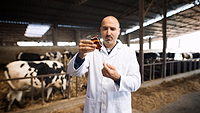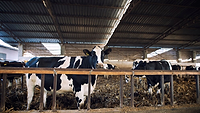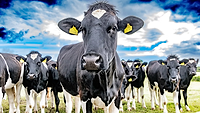USDA Announces Detection of New HPAI H5N1 Genotype in Dairy Cattle

Image credit: Mark Stebnicki via Pexels
The U.S. Department of Agriculture’s Animal and Plant Health Inspection Service (USDA-APHIS) National Veterinary Service Laboratories (NSVL) has detected a second genotype of Highly Pathogenic Avian Influenza H5N1 (HPAI H5N1) in dairy cattle.
Using whole genome sequencing, NSVL confirmed the presence of HPAI H5N1 clade 2.3.4.4b, genotype D1.1, marking the first time this genotype has been detected in dairy cattle. Genotype D1.1 represents the predominant genotype detected in North American migratory birds during the fall and winter of 2024–2025; it has been identified in wild birds and mammals, and has also spilled over into domestic poultry.
All previous detections of HPAI H5N1 in dairy cattle have been clade 2.3.4.4b, genotype B3.13.
The detection was the result of Nevada state tracing and investigation, following positive results from silo testing under USDA’s National Milk Testing Strategy (NMTS). USDA-APHIS is continuing to work with the Nevada Department of Agriculture to better understand the detection and mitigate further spread of the virus through additional on-farm investigation, testing, and the collection of epidemiological data.
In an effort to combat the ongoing HPAI H5N1 outbreak in American dairy cattle, USDA’s NMTS requires the nationwide collection and sampling of raw (unpasteurized) milk samples. NMTS is intended to support the rapid implementation of enhanced biosecurity measures that decrease the risk of transmission to other livestock, and to inform efforts that protect farmworkers by lowering their risk of exposure.
As of February 6, 2025, USDA-APHIS has reported 959 confirmed cases of HPAI H5N1 in dairy cattle in 16 states.
Looking for a reprint of this article?
From high-res PDFs to custom plaques, order your copy today!






